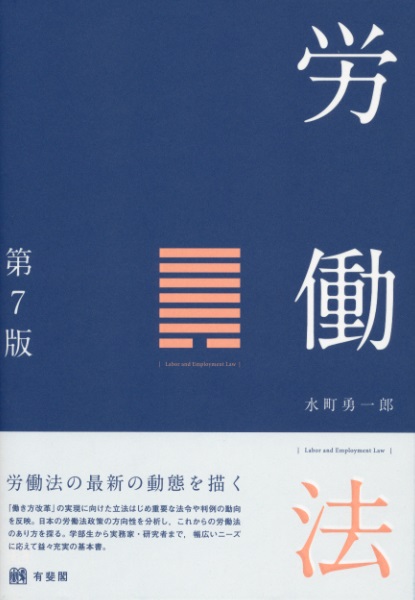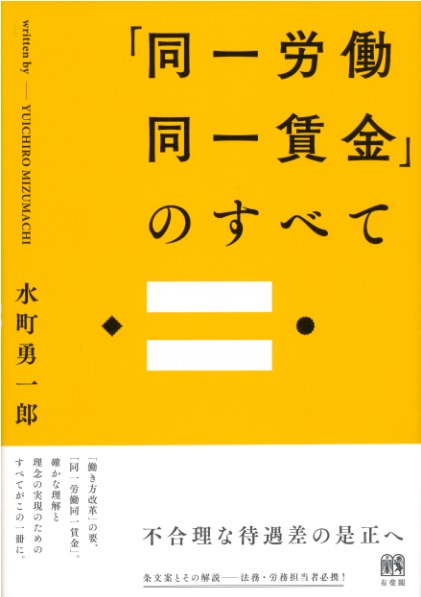
Title
Shōkai rōdōhō (A Detailed Analysis of Labor and Employment Laws – 4th edition)
Size
1624 pages, A5 format
Language
Japanese
Released
September 22, 2025
ISBN
978-4-13-031214-1 (4th edition)
Published by
University of Tokyo Press
Book Info
See Book Availability at Library
Misc.
The original edition was published on Sept. 25, 2019 (update: Aug. 2025)
Japanese Page
This book provides detailed explanations of labor and employment laws in Japan.
There are already numerous publications on Japanese labor and employment laws, including introductory works, textbooks, and general overviews. Within this context, this book has been written to encompass the following distinguishing features.
First, it is intended to cover a broad scope of diverse labor and employment law practices, in contrast to other works by the author that were written for specific types of readers, such as Rōdōhō nyūmon (An Introduction to Labor and Employment Laws; published by Iwanami Bunko) which is directed at the general public, people who never studied law in university, and Rōdōhō (Labor and Employment Laws; published by Yuhikaku) which is intended for undergraduate and graduate law students specializing in labor and employment laws.
Unlike these previous works, this book is written specifically for legal practitioners (lawyers, judges, policymakers, certified social insurance and labor consultants, corporate HR professionals, labor union officers, etc.) and researchers (such as researchers of labor and employment laws) who already have some familiarity with labor and employment laws, and presents various issues that arise in the application of labor laws and the subsequent professional questions.
Second, this book goes beyond simply explaining the practical applications of labor and employment laws by exploring the history and theory behind the laws. This is because professionals who work with Japan’s labor and employment laws have expressed to the author their keen interest in the historical background and theories of labor and employment laws in addition to their need to know the trends in legislation and case law. They seek to implement their practice while confirming their positions within the context of historical precedent and theory.
There is no such thing as practice without history. Nor is there any such thing as practice without theory. Grounded in this awareness, this book attempts to provide clear explanations of the foundations and historical roots of contemporary labor and employment laws as well as their theoretical underpinnings, and goes further to elucidate the diverse issues related to the practical application of today’s labor and employment laws given these historical and theoretical factors.
To tackle a topic of such magnitude and scope, a project team was formed of lawyers specializing in labor and employment laws (representing both labor and management), certified social insurance and labor consultants, policymakers (former employees of the Ministry of Health, Labour and Welfare), and researchers (academics specializing in labor/employment and social security laws) which met for discussions on 15 occasions over a 5-year period commencing in July 2014. The professional advice, ideas, and opinions of the members of this team add spice to the contents of this book.
This book offers historical and theoretical considerations of Japanese labor and employment laws, with an emphasis on the integration of legal theory and practice. My hope is that through its review of Japan’s labor and employment laws, this book will point readers toward one possible goal for Japan’s current efforts at implementing work style changes.
(Written by MIZUMACHI Yuichiro, Professor, Institute of Social Science / 2020)



 Find a book
Find a book


 eBook
eBook

